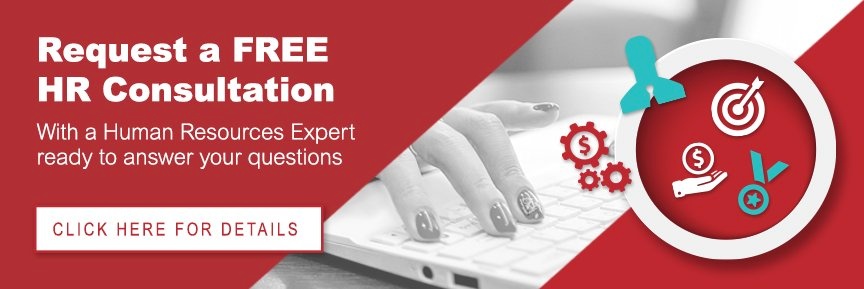
Work attitudes are changing, and likely to continue to do so. Younger workers often expect increased flexibility and a different attitude from management, and to keep the best talent moving forward, companies must adapt to this. Employers simply can't afford to expect workers to adjust to them, but these trends are still developing.
It can be hard to keep track, but here are some major trends that are likely to continue even as things return to normal after the pandemic.
Where People Work Has Shifted
Employers that expect everyone to work full time in an office are facing difficulties. Many companies have found they have no choice but to retain a remote or hybrid model.
People often want to work from anywhere or to live in areas with a lower cost of living. Accommodating these desires affects the number of people in the office, which affects what’s needed from an office layout. Kitchens, gyms, and relaxation rooms have become considerably less useful, and reworking space to be more focused on in-person collaboration is something to consider as you move forward. Obviously, some companies will be able to reduce their office footprint in general, leasing a smaller space that is more appropriate to modern hybrid work.
Make sure that you are up to date on compliance issues that might impact multi-state employers, and on whether your employees establish sales tax nexus in the states they move to.
Another worry is the developing potential for conflict between remote and in-person workers. In-person workers may perceive remote workers get less done. Those whose jobs require that they be on-site may develop some resentment, and the team bonds are harder to sustain. Meanwhile, remote workers may fear that they are less likely to get raises and promotions. It's vital to ensure that people socialize and collaborate regardless of where they are located. That might include such pandemic-era ideas as sending care packages to remote employees for online happy hour or the like.
Tangible Benefits Are More Crucial
Office perks, such as game rooms or nap rooms, aren’t capable of attracting good workers. Great office space is far less attractive than it was, and there is likely to be a growth in hot-desking, where multiple workers share a desk on alternating shifts or days.
Companies must shift focus and ensure they provide bonuses less connected to the office. These benefits might include increased vacation days, flexible shifts, and employee discounts.
Healthcare and retirement are, of course, more important than ever. If you need to upgrade your benefits package or develop a new strategy, partnering with a professional employer organization (PEO) can help. They can help you afford better benefits and give you ideas as to what other clients might have done. Your benefits strategy should also consider worker input and the kind of perks your direct competition is offering.
Companies are Competing for Talent
The "Great Resignation" is leading to much higher competition for talent than before, and even before the pandemic, certain skills were in high demand. In September 2021, 4.4 million Americans quit their jobs. A worker shortage across multiple industries, including restaurants, trucking, and warehousing is contributing to ongoing supply chain issues.
All companies are competing for the same pool of workers, many of whom have raised their standards for what they expect from their employees. Larger companies are increasing wages and all companies are adapting perks to try and bring in new talent.
Workers, meanwhile, want to prioritize their health and well-being, and many feel life is too short for a bad job, or even one where they don't get on with their manager. Not only is it harder to get talent, but it is harder than ever to keep the good people you already have. Even those who are not considering quitting are likely to be open to a better offer. When matching offers, always consider the cost of replacing the employee should they choose to quit.
As a result of this trend, companies tolerate lower employee performance more than they did previously. Employers fear risking replacing an employee whose performance is inadequate only to not find a replacement or a poor replacement. That wastes money through turnover and training costs, where they could continue with their current staff. Companies can adapt and work around this trend by improving how they manage performance, such as by increasing coaching for low-performing employees and reconsidering the criteria relevant to termination based on ongoing performance issues.
Employers Must Increasingly Rely on Worker Input
Companies must work hard to keep all workers happy, and that’s particularly crucial in the current client. You must prioritize mental health and job satisfaction to keep productivity up and turnover down.
Taking worker surveys and implementing changes accordingly can make a huge difference. While you shouldn’t take up all suggestions, implementing the ones that work and explaining why the others are not feasible helps your workers feel heard and empowered. Properly addressing employee concerns reduces overall stress and burnout, lowers absenteeism, and creates a better, happier overall atmosphere in the office.
Also, opening to more ideas will help your business in general. Younger, less senior workers may have very good ideas that they are afraid to bring up, or which they think will be ignored.
Worker attitudes are shifting, and the overall balance of power is currently tilted in workers’ favor. To thrive, you need to be able to cater to an increasingly mobile and remote workforce, provide your employees with the benefits they need and the perks they desire and compete for talent in a marketplace that increasingly prefers employees.
Working with a PEO can help you develop the best HR strategies. They can provide you with the experience they have gleaned from working with other clients, and they can handle tedious admin work. Partnering with a PEO can help your HR staff focus on core strategies. It is the best way to develop an HR strategy that will work in today's world.

